How To Tell If Koi Eggs Are Fertilized?
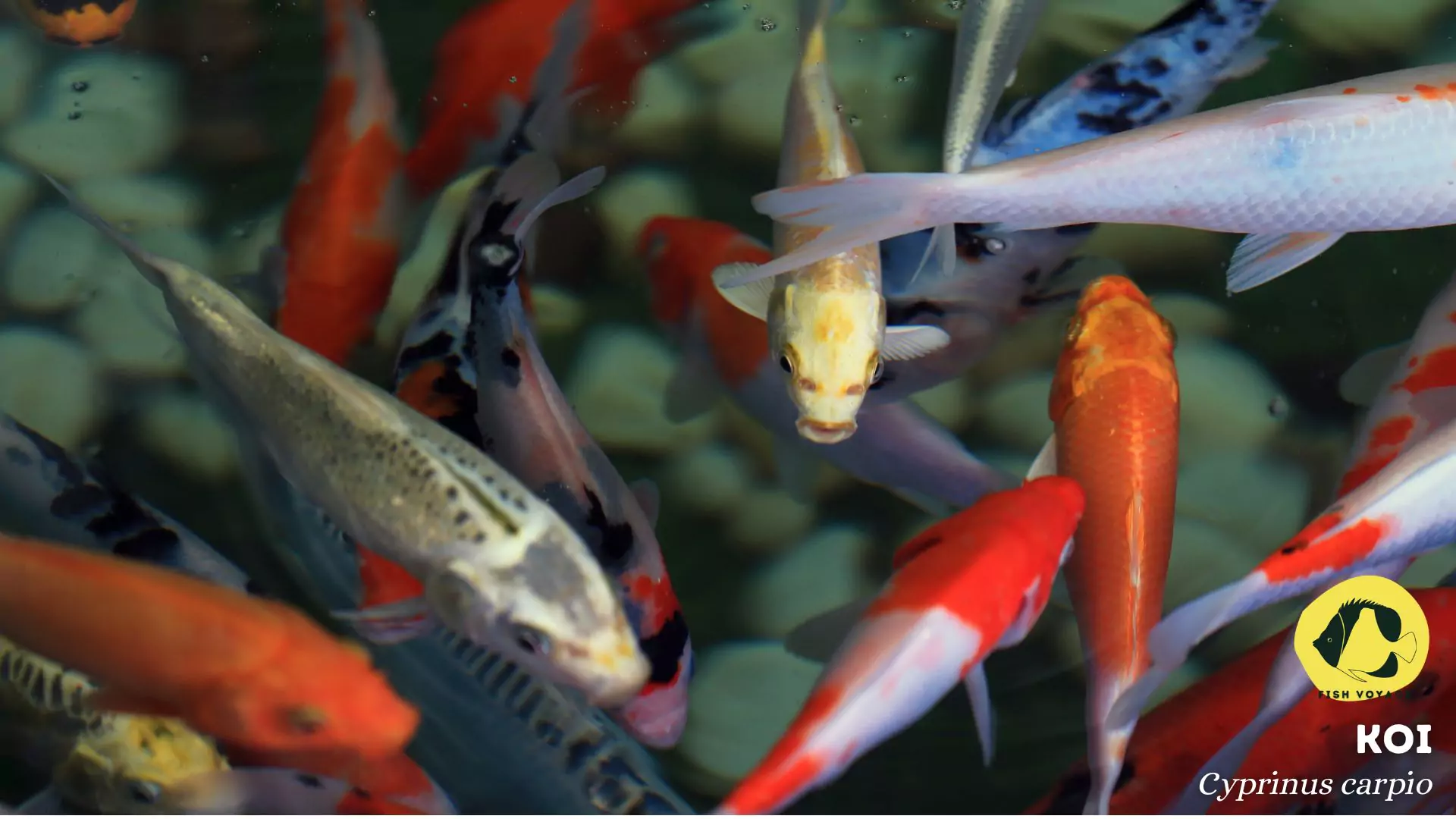
In the intricate world of koi breeding, discerning whether the eggs are successfully fertilized is a crucial undertaking for both devoted koi enthusiasts and seasoned breeders alike. The ability to accurately identify fertilized koi eggs plays a pivotal role in ensuring the health and viability of the next generation of these captivating aquatic creatures. For koi enthusiasts, this knowledge offers a deeper connection to the breeding process, fostering a sense of stewardship and admiration for the delicate beginnings of their cherished fish. Meanwhile, for breeders, the ability to ascertain fertilization holds significant implications for the success of their breeding programs, influencing the quality of the offspring and, ultimately, the future development of their koi stocks. As we delve into the intricacies of discerning fertilized koi eggs, we embark on a journey that not only enriches our understanding of these magnificent fish but also contributes to the sustainable and thriving legacy of the koi breeding community.
Understanding the Koi Reproduction Process
Spawning Initiation
- Koi reproduction commences with the spawning season, typically triggered by rising water temperatures in spring.
- The pivotal factor for successful spawning lies in creating an environment that mimics the ideal conditions for these ornamental fish.
Courtship Rituals
- Male koi actively pursue females, engaging in elaborate courtship displays.
- Ritualistic behaviors, including nudging and circling, precede the actual spawning event, fostering a connection between the prospective parents.
Spawning Act
- The climactic moment involves the female releasing her eggs, followed by the male’s simultaneous release of milt (sperm).
- The water becomes a canvas for the intricate dance of fertilization, as the milt makes contact with the eggs, initiating the development process.
Fertilization Dynamics
- The fertilization of koi eggs is a pivotal stage that determines the viability of the offspring.
- Each fertilized egg holds the promise of a new life, with the fusion of genetic material setting the stage for the growth and development of future koi.
Egg Attachment and Incubation
- Fertilized eggs adhere to various surfaces, such as aquatic vegetation or specially designed spawning mats, ensuring a safe incubation environment.
- Temperature regulation and water quality during this phase significantly influence the hatching success.
Hatching and Fry Emergence
- After an incubation period, the fertilized eggs hatch into fry, signifying the culmination of the koi reproduction cycle.
- The delicate fry are highly vulnerable during this stage, requiring meticulous care and optimal environmental conditions for survival.
Understanding the intricacies of the koi breeding cycle sheds light on the delicate dance of nature that unfolds beneath the water’s surface. From the initiation of spawning rituals to the emergence of fry, each phase is a testament to the remarkable journey of life, where fertilization serves as the linchpin for the perpetuation of these beloved aquatic companions in our ornamental ponds.
Physical Characteristics of Fertilized Koi Eggs
Color Palette of Fertilized Eggs
- Fertilized koi eggs exhibit a distinctive and vibrant coloration, often ranging from a translucent amber to a translucent orange hue.
- This color spectrum is indicative of the presence of viable embryos within the eggs, portraying the promise of new life.
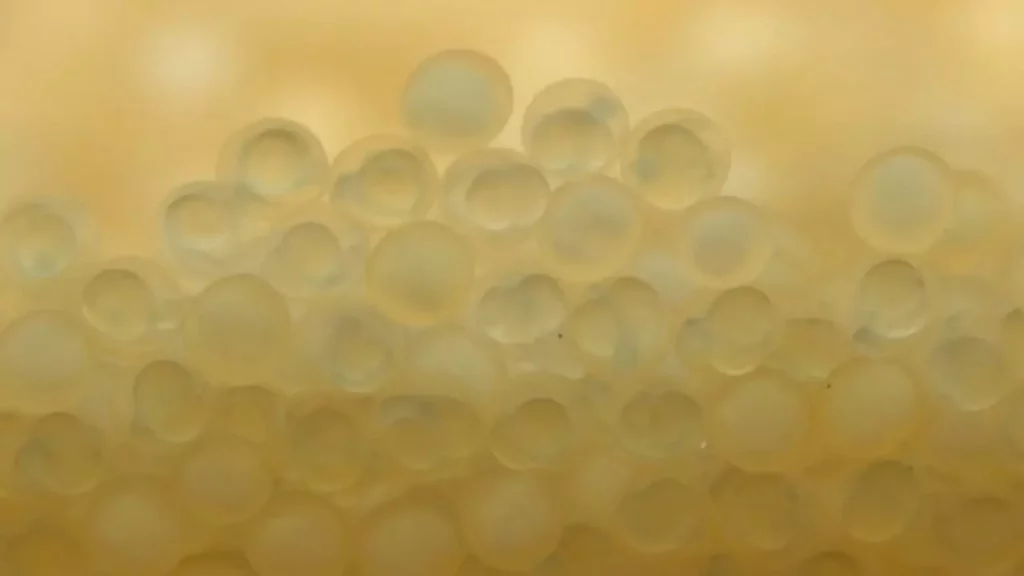
Size Matters
- Fertilized koi eggs are characteristically larger compared to their unfertilized counterparts.
- Size discrepancies can be observed during careful inspection, providing a tangible cue for enthusiasts and breeders keen on discerning the fertilization status.
Texture and Transparency
- Upon close examination, fertilized koi eggs boast a slightly adhesive texture, allowing them to adhere to chosen surfaces during the incubation period.
- The transparency of these eggs is notable, revealing the developing embryo within and imparting a visual insight into the early stages of koi life.
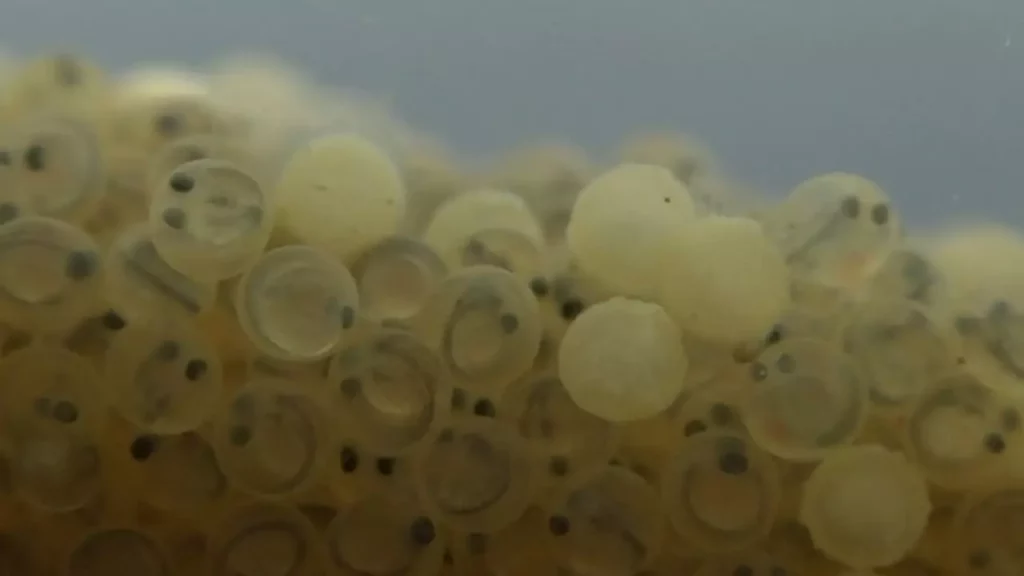
Unfertilized Eggs in Contrast
- Unfertilized koi eggs, in contrast, tend to appear smaller and lack the vibrant coloration exhibited by their fertilized counterparts.
- The absence of developing embryos results in a clearer, almost translucent appearance, providing a visual distinction during the inspection process.
Visual Reference
- For a comprehensive understanding, images or diagrams serve as invaluable visual aids in distinguishing between fertilized and unfertilized koi eggs.
- Utilizing these references enhances the learning experience, empowering enthusiasts and breeders with a clearer vision of the nuanced characteristics associated with fertilization.
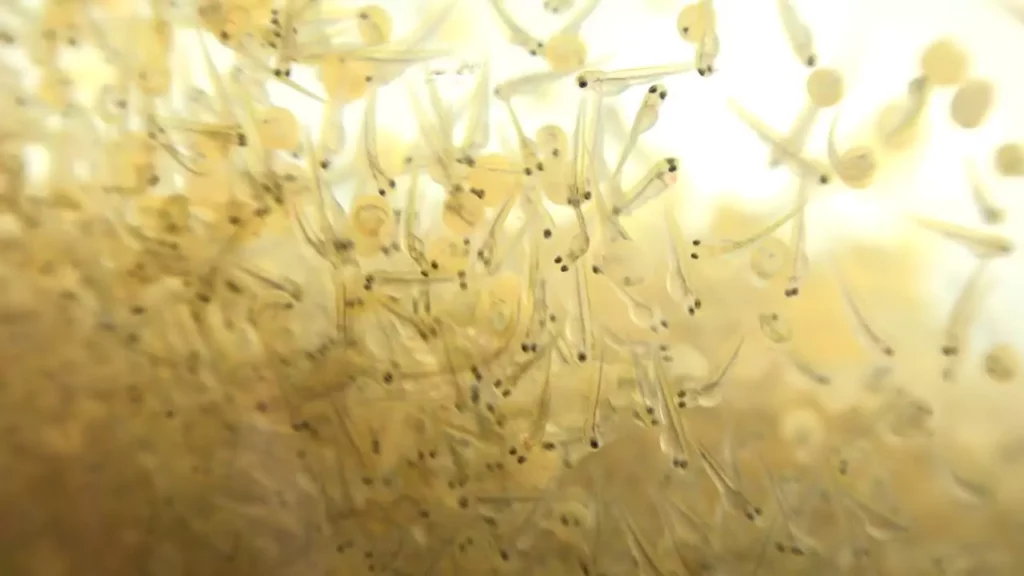
In the realm of koi breeding, recognizing the physical nuances of fertilized eggs is akin to deciphering nature’s intricate tapestry. The color, size, and texture of these eggs serve as tangible markers, offering enthusiasts and breeders a visual roadmap to the beginnings of new life beneath the water’s surface. As we embark on this visual journey, the artistry of fertilization comes to life, painting a vivid picture of the miraculous cycle of reproduction in our cherished koi ponds.
Observing Behavioral Signs
Pre-Spawning Rituals
- Prior to spawning, koi parents engage in heightened activity, displaying increased swimming and exploration.
- Courtship behaviors intensify, with the male often nudging and circling the female, establishing a connection essential for successful reproduction.
Egg-Laying Dance
- During the spawning act, both male and female koi exhibit synchronized movements.
- The female releases eggs, while the male simultaneously releases milt, fostering an orchestrated dance of fertilization beneath the water’s surface.
Post-Spawning Behaviors
- After the spawning event, koi parents may display a mix of exhaustion and protective instincts.
- The female might exhibit a diligent effort to ensure the eggs adhere to a suitable surface, while the male may continue to guard the immediate vicinity.
Guarding the Nest
- Successful fertilization often triggers heightened protective behaviors, with one or both parents safeguarding the area containing the fertilized eggs.
- Vigilance becomes a hallmark as they ward off potential threats, demonstrating an invested interest in the success of the reproductive process.
Attentive Supervision
- Monitoring the breeding pair becomes imperative during the post-spawning period.
- Successful fertilization is often accompanied by the parents’ attentive supervision of the eggs, ensuring optimal conditions for their development.
Signs of Stress or Disturbance
- Behavioral signs also include potential stress indicators, such as excessive aggression or erratic swimming patterns.
- Sudden changes in behavior may necessitate intervention or adjustments in the breeding environment to mitigate potential risks to the fertilized eggs.
Observing the nuanced behaviors of koi parents during and after spawning provides a window into the intimate world of aquatic reproduction. Successful fertilization is not only marked by the physical act but is intricately woven into the behaviors exhibited by these majestic fish. As keepers of these underwater realms, our role extends beyond passive observation to active participation in ensuring a conducive environment for the delicate dance of koi reproduction.
Water Quality and Egg Health
Crucial Link between Water Quality and Egg Health
- Water quality serves as a linchpin in ensuring the health and vitality of koi eggs.
- The delicate balance of pH, ammonia, nitrites, and nitrates directly influences the success of fertilization and subsequent hatching.
Optimal Water Parameters for Fertilization
- Maintain a pH level within the ideal range of 7.0 to 8.0 to provide a suitable environment for fertilization.
- Adequate dissolved oxygen levels are imperative, promoting the well-being of both adult koi and developing embryos.
Temperature Management
- Synchronize water temperature with the breeding season, typically ranging from 65°F to 75°F (18°C to 24°C).
- Consistent temperature maintenance is crucial for the successful development of fertilized eggs.
Ammonia and Nitrite Control
- Regularly test and control ammonia and nitrite levels, as these compounds can be detrimental to egg health.
- Employ biological filtration methods to ensure the breakdown of harmful substances within the pond.
Nitrate Regulation
- Keep nitrate levels below 40 ppm to prevent potential stress on developing embryos.
- Implement water changes and utilize aquatic plants to assist in natural nitrate reduction.
Regular Water Testing
- Conduct routine water tests using reliable kits to monitor key parameters.
- Promptly address any deviations from optimal conditions to mitigate potential risks to the fertilized eggs.
Filtration Systems
- Invest in efficient mechanical and biological filtration systems to uphold water clarity and purity.
- Proper filtration not only aids in maintaining water quality but also contributes to a conducive environment for successful fertilization.
Aeration Strategies
- Implement aeration devices to enhance oxygen levels, promoting a thriving environment for both adult koi and developing embryos.
- Adequate oxygenation is particularly crucial during the delicate stages of fertilization and incubation.
Navigating the intricacies of water quality management is paramount in fostering the health and development of koi eggs. As stewards of these aquatic ecosystems, it is our responsibility to create an environment that not only supports the well-being of our koi but also cultivates the optimal conditions for the mesmerizing journey from fertilization to hatching.
Using a Candling Technique
Introduction to Candling
- Candling is a time-honored method employed by koi enthusiasts and breeders to inspect the development of fertilized eggs.
- This technique involves the use of a focused light source to reveal the internal conditions of the eggs, offering valuable insights into the embryonic stages.
Selecting a Suitable Light Source
- Choose a reliable and adjustable light source, such as a small flashlight or LED torch.
- Ensure that the light emitted is neither too harsh nor too dim, allowing for optimal visibility without causing stress to the eggs.
Selecting the Right Time for Candling
- Begin the candling process approximately 48 to 72 hours after the eggs have been laid.
- This timing allows for the initial stages of embryonic development to become visible under the light.
Isolating the Egg
- Gently lift the egg from its attachment surface using a soft spatula or spoon.
- Exercise caution to avoid unnecessary agitation, ensuring the egg remains undisturbed during the inspection.
Positioning the Light Source
- In a darkened environment, position the light source beneath the egg.
- The light penetrates the translucent eggshell, unveiling the internal structures and revealing the presence of developing embryos.
Observing Embryonic Development
- Look for the telltale signs of embryonic growth, such as the appearance of a dark spot or the formation of blood vessels.
- Healthy embryos will exhibit distinct patterns, indicating successful fertilization.
Recording Observations
- Keep a record of your observations, noting the number of viable embryos and their developmental stage.
- This information aids in tracking the progress of the breeding and hatching process.
Precautions during Candling
- Handle the eggs with utmost care to avoid damage to the delicate shells.
- Limit candling sessions to brief intervals to minimize stress on both the eggs and the breeding pair.
- Return the inspected eggs promptly to their original position in the breeding environment.
Candling provides a captivating window into the hidden world of koi development, allowing breeders and enthusiasts to witness the early stages of life. As we delicately illuminate the mysteries within each egg, we not only gain valuable insights into the health of the embryos but also foster a deeper appreciation for the awe-inspiring journey from fertilization to the emergence of vibrant koi fry.
Timing the Inspection
Post-Spawning Period
- Initiate the inspection process 48 to 72 hours after the koi have completed the spawning act.
- This time frame allows for the initial stages of embryonic development, making it an opportune moment to assess fertilization success.
Visible Signs of Fertilization
- Expect the emergence of visible signs of fertilization during the initial inspection.
- Look for dark spots or veins within the translucent eggshell, indicating the presence of developing embryos.
Progressive Observations
- Conduct subsequent inspections at regular intervals to monitor the ongoing development of the fertilized eggs.
- Gradual changes, such as the formation of the embryonic body and the intricate network of blood vessels, become more apparent over time.
Patience as a Virtue
- Understand that the full spectrum of developmental milestones may take several days to manifest.
- Exercise patience during the observation process, allowing the embryos the necessary time to progress through each stage of growth.
Avoiding Premature Conclusions
- Resist drawing hasty conclusions during the initial inspections.
- Embryonic development is a gradual process, and premature assessments may lead to inaccurate conclusions about the success of fertilization.
Cautious Handling and Observation
- Handle the eggs with care during each inspection, minimizing disruption to the delicate embryonic environment.
- Avoid excessive movement that may cause stress to both the eggs and the breeding pair.
Documentation for Tracking Progress
- Maintain a log documenting your observations at each inspection.
- Recording changes in the appearance of the eggs helps track the progress of fertilization and provides valuable insights for future breeding endeavors.
Regular Monitoring Beyond Hatching
- Continue monitoring the eggs beyond the initial stages of fertilization and observe the hatching process.
- The patience exercised during this critical phase contributes to the overall success of the breeding endeavor.
By carefully timing and conducting inspections with a blend of precision and patience, koi enthusiasts and breeders embark on a journey of discovery. As we navigate the delicate process of observing fertilized eggs, the interplay of time and attentive observation unfolds the captivating story of life beneath the water’s surface. In this dance of nature, each moment of patience contributes to the holistic understanding of koi reproduction, fostering a deeper connection with these enchanting aquatic beings.
Troubleshooting and Common Issues
Challenges in Identification
- Issue: Discerning fertilization can be challenging, especially for beginners.
- Solution: Take time to educate yourself on the physical characteristics of fertilized eggs. Leverage online resources, forums, and expert advice to refine your observational skills.
Water Quality Concerns
- Issue: Poor water conditions can obscure the visual cues of fertilization.
- Solution: Prioritize optimal water quality by regularly testing and maintaining key parameters. Address any issues promptly to create a conducive environment for embryonic development.
Aggressive Tankmates
- Issue: Aggressive tank mates may disturb koi eggs, making it difficult to determine fertilization.
- Solution: Consider segregating the breeding pair or providing protective barriers to shield the eggs from potential disturbances. Ensure a peaceful environment for the reproductive process.
Inadequate Lighting for Candling
- Issue: Insufficient or harsh lighting during candling can hinder accurate assessments of fertilization.
- Solution: Use a gentle and adjustable light source for candling. Experiment with different lighting conditions to find the optimal balance that facilitates clear visibility without causing stress.
Environmental Stressors
- Issue: Elevated stress levels in koi can impact their reproductive behaviors and the success of fertilization.
- Solution: Mitigate stress factors by maintaining a stable and comfortable environment. Ensure proper nutrition, adequate hiding spots, and minimal disruptions to promote a stress-free breeding atmosphere.
Unexpected Water Parameter Fluctuations
- Issue: Sudden changes in water parameters can compromise egg health.
- Solution: Regularly monitor and stabilize water parameters. Implement gradual adjustments to avoid shock to the breeding pair and developing embryos.
Contamination of Eggs
- Issue: External factors, such as debris or algae, may contaminate the eggs.
- Solution: Keep the breeding environment clean and free from debris. Use specialized spawning mats or carefully selected surfaces to minimize the risk of contamination.
Seeking Professional Guidance
- Issue: If challenges persist, seeking professional assistance may be necessary.
- Solution: Consult with experienced koi breeders, aquatic veterinarians, or local fish experts. Professional advice can provide valuable insights and customized solutions for specific challenges.
Navigating the intricacies of koi fertilization involves addressing potential hurdles with a strategic and informed approach. By troubleshooting common issues and embracing solutions tailored to the unique needs of your koi and breeding setup, you contribute to the overall success of the reproduction process. Should challenges persist, don’t hesitate to reach out to the koi community or professionals who can offer specialized guidance based on their expertise.
Conclusion
In the intricate tapestry of koi breeding, the ability to discern fertilized eggs marks a pivotal skill for enthusiasts and breeders alike. As we conclude this exploration into the world of koi reproduction, let’s recap the key points that empower us to unlock the mysteries of fertilization.
- Visual Clues: Distinguish fertilized koi eggs by recognizing visual cues such as vibrant colors, size variations, and distinctive textures.
- Behavioral Insights: Understand the nuanced behaviors of koi parents during and after spawning, as these actions serve as indicators of successful fertilization.
- Water Quality Mastery: Uphold optimal water conditions by regulating pH, ammonia, nitrites, and nitrates, creating a nurturing environment for the delicate stages of koi development.
- Candling Technique: Illuminate the secrets within each egg through the art of candling, allowing for a detailed inspection of developing embryos.
- Timing and Patience: Time your inspections carefully, and exercise patience as you await the gradual progression of embryonic development.
- Troubleshooting Challenges: Address common issues, from water quality fluctuations to potential disturbances, with strategic solutions tailored to your unique breeding setup.
As fellow keepers of these mesmerizing aquatic companions, your experiences and insights are invaluable. Share your journey in the vibrant community of koi enthusiasts, fostering a collective knowledge that enriches our understanding of these remarkable fish. Whether you’re a seasoned breeder or an enthusiast embarking on your first breeding endeavor, the exchange of experiences strengthens our bond with these enchanting creatures.
Your voice matters! We invite you to share your thoughts, experiences, and questions in the comments below. Let this space become a hub for collaborative learning, where the collective wisdom of the koi community flourishes. If you found this guide helpful, consider sharing it with fellow enthusiasts and breeders. Together, we cultivate a shared passion for the art and science of koi breeding, nurturing the promise of new life in every pond.
Additional Resources
Online Forums for Community Engagement
Joining online forums like Koi-Bito Forum and Koiphen provides a platform to connect with seasoned koi enthusiasts and breeders. Share your experiences, seek advice, and participate in discussions that delve into the intricacies of koi breeding.
Books on Koi Breeding
Explore comprehensive literature like Koi: A Complete Guide to Their Care and Color Varieties by Bernice Brewster and Nick Fletcher and Koi For Dummies by R. D. Bartlett and Patricia Bartlett are authored by experts in the field of koi breeding. These books offer in-depth insights, practical guidance, and a wealth of knowledge to enhance your understanding of the fascinating world of koi reproduction.
By exploring these additional resources, you embark on a continuous journey of learning and discovery in the realm of koi breeding. Enrich your knowledge, connect with like-minded individuals, and stay updated on the latest advancements in this captivating field. Your commitment to education contributes to the flourishing community of koi enthusiasts and ensures the well-being of these magnificent aquatic companions.
Frequently Asked Questions (FAQs)
1. What are the key visual cues for identifying fertilized koi eggs?
Fertilized koi eggs often exhibit vibrant colors, such as translucent amber or orange. Size variations, distinct textures, and the presence of developing embryos, visible as dark spots or veins, serve as crucial visual indicators.
2. When is the ideal time to inspect koi eggs for fertilization?
Initiate inspections approximately 48 to 72 hours after the completion of the spawning act. This time frame allows for the initial stages of embryonic development, making it optimal for assessing fertilization success.
3. What role does water quality play in determining koi egg health and fertilization?
Water quality is paramount for successful fertilization. Maintaining optimal pH levels, controlling ammonia and nitrite concentrations, and ensuring proper temperature regulation create a conducive environment for the health and development of koi eggs.
4. How can the candling technique be used to check for fertilized koi eggs?
Candling involves using a focused light source beneath the egg to reveal internal structures. Observing dark spots or blood vessels within the translucent eggshell during candling provides insights into the presence of developing embryos.
5. What are common challenges in determining koi egg fertilization, and how can they be addressed?
Challenges may include difficulty in identification, aggressive tankmates, or unexpected water parameter fluctuations. Address these issues by educating yourself, creating a stress-free environment, and implementing strategic solutions tailored to your specific breeding setup.

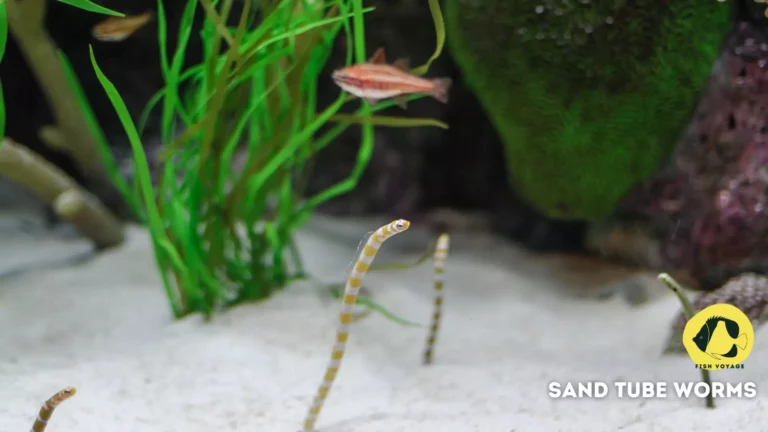
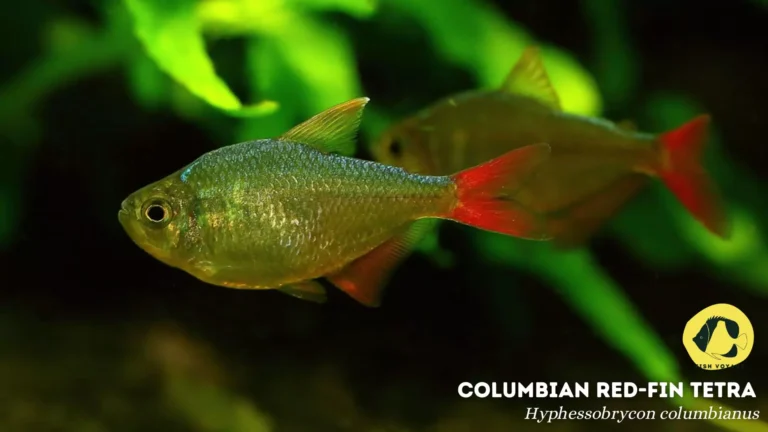


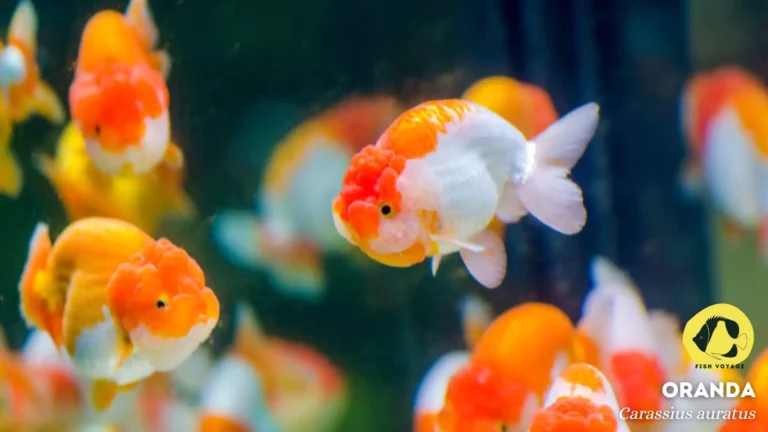
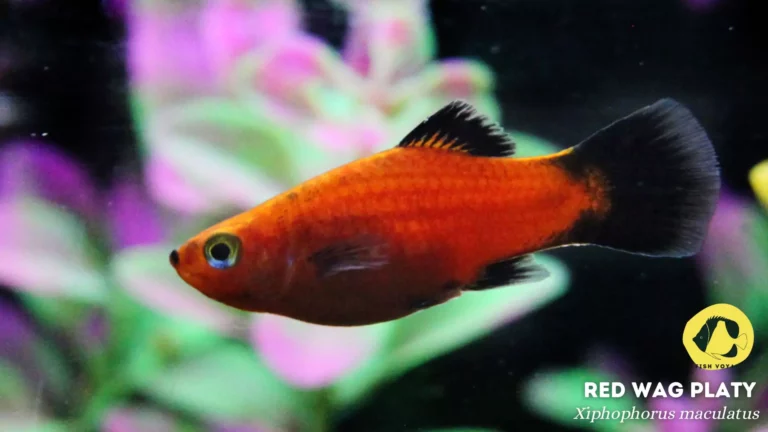
Wow, marvelous blog layout! How lengthy have you been running a blog for?
you made blogging glance easy. The entire glance of your site is great, let alone the
content material!
Thank you so much for your kind words! We’ve been in the blogging business for 6-7 years now, but FishVoyage is now a 4-month-old blog. We’re thrilled to hear you find the layout and content appealing. Stay tuned for more interesting posts!